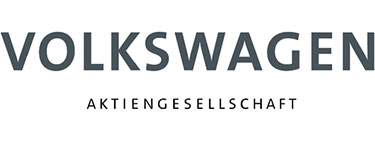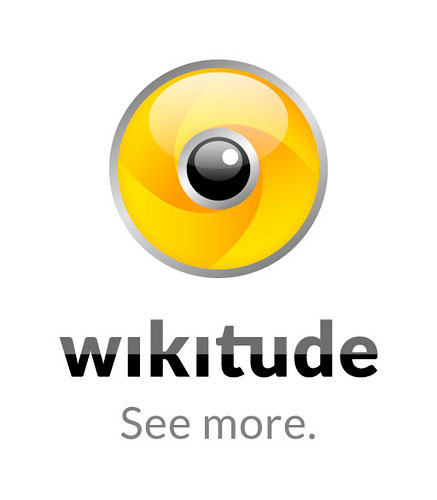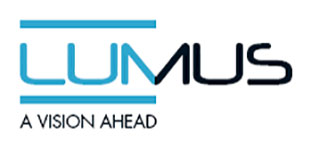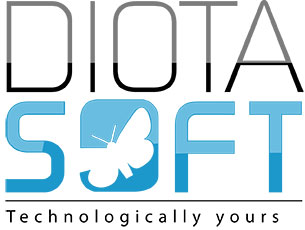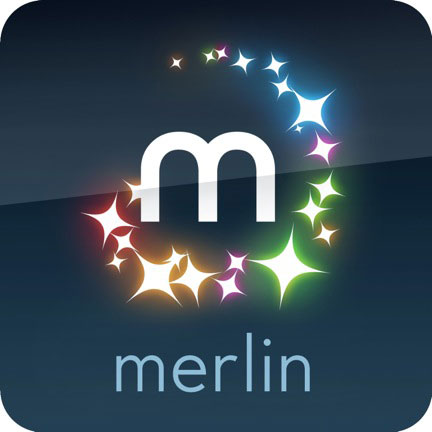S&T Submission Guidelines
S&T Submission Guidelines
Submission Deadlines
Mandatory Paper Abstracts Pre-Submission: March 18, 2014, 23:59 US Pacific Time (Extended to: March 19, 2014, 23:59 US Pacific Time)
Paper Submission S&T: March 25, 2014, 23:59 US Pacific Time (Extended to: March 28, 2014, 23:59 US Pacific Time)
Paper Submission MASH'D: March 25, 2014, 23:59 US Pacific Time
Notification for Papers: June 1, 2014
Poster Submission: June 8, 2014, 23:59 US Pacific Time
Notification for Posters: June 30, 2014
Camera-ready copy: July 7, 2014
Papers
Long Papers must be 8-10 pages long and will be published in the ISMAR 2014 conference proceedings and included in the IEEE Xplore digital library. The 10 best Long Papers will be invited to submit an extended version to a special issue of IEEE Transactions on Visualization and Computer Graphics. Short Papers (4-6 pages) will be published in the ISMAR 2014 conference proceedings and included in the IEEE Xplore digital library. All papers will be presented orally at the conference. There is no distinction between Long and Short Papers in terms of the expected quality. The acceptance for publication will be partly based on the contribution per page of the paper. For example, a paper with eight pages will be expected to have more contribution than one with five pages. Material simultaneously submitted to ISMAR 2014 and another venue will be rejected without review.
Accepted papers will be presented at the conference in talks (15-20 min.), with the allotted presentation time dependent upon the length and content of the paper. Papers are also eligible for one of a number of best paper awards which will be announced for both S&T and MASH’D tracks during the conference. The acceptance for publication will be partly based on the contribution per page of the paper.
Examples of topics appropriate for a presentation in fewer pages are:
· A smaller, focused research result that can be completely described and justified in fewer than 10 pages.
- An application case study.
- A novel concept or application that does not have the level of implementation and evaluation expected of a 10-page paper.
Posters
Posters provide an interactive forum where authors can present work to conference attendees during a poster session. Accepted posters will be displayed on large boards (A0 size, or about 840mm x 1200mm / 2.75ft. x 4 ft.). Poster authors will also have one minute to describe their poster during a “poster teasers” preview before any of the poster sessions.
Authors wishing to present a poster must submit a two-page poster submission describing the research to be presented in the poster. Poster submissions are reviewed by the Program Committee via the same procedure as papers, but they are judged much more leniently because of the short length and because they do not count as an ISMAR publication. Note that poster submissions will be published in the conference proceedings, and archived in the associated digital library. We encourage poster submissions on new work that is still in progress, or small, highly focused results. The main criteria are novelty and usefulness to the ISMAR community.
Submission Rules
1. Papers and posters must be written in English.
2. An abstract for the paper must be submitted at the abstracts deadline before a full version can be submitted. This helps us to assign submissions to members of the Program Committee in advance. There won't be any assessment or review of the paper between both deadlines; the abstract deadline is just informative for us.
3. A submission can only be submitted under one program (Science & Technology or Media professionals, Artists, Social Scientists, Humanity scholars and Designers) and under one category (paper or posters). You must not submit the same material simultaneously to different programs or categories. However, you are more than welcome to make multiple different submissions for both programs.
4. Submissions must not be under review by any other conference, journal or other publication venue during ISMAR’s reviewing period, and must not be previously published or accepted for publication elsewhere. ISMAR actively searches for duplicate submissions by exchanging author and title lists with other conferences and journals. Such submissions will be rejected without review, and the coordinators of the duplicate submission will be notified.
5. Papers must be strictly formatted according to the IEEE Computer Society VGTC authoring guidelines ( http://www.cs.sfu.ca/~vis/Tasks/camera.html) and submitted electronically as PDF documents. ISMAR uses a single-blind reviewing process. Thus, authors and affiliations may be mentioned.
6. Authors may include supplementary materials (such as a video) with the submission, and such materials are highly encouraged if they provide evidence of the claimed contribution. Videos should not be longer than five minutes, and the total size of all submitted materials (including the PDF document) must be under 50MB. If you include a video, also include a text file describing what codec you used to create the video. Videos should be playable by either the current Windows Media Player, Apple Quicktime player, or VLC. It is preferable that your video be playable by these standard players without requiring additional codec installations. If you require a special codec (e.g., DivX), make certain that you include instructions on how to find and install that codec. If the reviewers cannot play your video file, it may reduce the chances of your submission being accepted.
7. The submission should include all information necessary to evaluate the paper and must not ask reviewers to go to web sites or other external information sources, since that might circumvent page and media format limits, and may jeopardize the anonymity of the reviewers. Submissions that require external sites will either be returned for correction or rejected without review.
8. For accepted papers and posters, at least one author must register for the conference and present the work. If no author is registered by the early registration deadline, the accepted work will be withdrawn from the proceedings and digital libraries.
Submission Process
Papers and Posters templates (TEX, DOC) are available here:
All materials will be submitted electronically through the Precision Conference website (which will be ready early March, 2014) at:
If you already have an account with that system, please use that account to submit your materials. Otherwise, create a new account. After login, select the area and type of your new submission:
- Science and Technology Papers
- MASH'D Papers
- Science and Technology Posters
- MASH'D Posters
As part of the submission you will be able to choose a major topic and a list of associated keywords.
After Submission
After you submitted your paper or poster, the following process takes place:
1. The submission will be reviewed by the Program Committee and external reviewers.
2. After all reviews are in, authors can see the reviews and write a short rebuttal to clarify questions or errors in the reviews.
3. Based on the reviews (external, meta) and the rebuttal, the Program Committee will make a final decision about which contributions to accept in the PC meeting in June 2014.
4. You will receive a notification of acceptance or rejection in the following week.
5. If your submission was accepted or conditionally accepted, a camera-ready version must be submitted.
6. Papers will be presented in oral sessions, while posters are presented in dedicated poster sessions at the conference.
Reviewing Process
ISMAR is a high-quality conference with a competitive submission process. In 2013, ISMAR accepted only 25.2% of the papers submitted. For information on past conferences including acceptance rates and best paper awards see the ismar.net website.
ISMAR has a rigorous reviewing process that is similar to the processes used by ACM SIGGRAPH and ACM UIST. Every submitted paper and poster is subjected to this process.
Reviewing: We have two tiers of reviewers: the Program Committee and a pool of reviewers. Each paper is assigned to a member of the Program Committee, and that person will procure at least four reviews from the reviewers or additional external reviewers, in addition to providing a meta review. For posters, three reviews are obtained plus the additional meta reviews.
Papers: Long Papers are from eight to 10 pages, and Short Papers are from four to six pages in length. They must describe a novel contribution to the field and provide the evaluations necessary to prove the claims of the contribution. There is no distinction between Long and Short Papers in terms of the expected quality; all papers are held to rigorous standards of contribution and evaluation. The acceptance for publication will be partly based on the contribution per page of the paper. See the section below, “Writing a good ISMAR paper,” for more guidelines. However, these are only hints; the final merit of a paper will be determined by the reviewers and the Program Committee.
Posters are reviewed through the same procedure as papers, but are much more leniently judged due to space limitations and because they do not count as a publication. We encourage posters on new work that is still in progress, or small, highly focused results. The main criteria are novelty and usefulness to the ISMAR community.
Rebuttals: After all reviews are in, the website will be open for authors to read their reviews and provide a short rebuttal (up to 500 words). The purpose of the rebuttal is to correct factual errors in the review or clarify questions raised in the reviews. No new material, results, or data may be included in the rebuttal. Any such information will be deleted. After the rebuttal period, the assigned Program Committee member will prepare a recommendation for the PC meeting, taking into account reviews, rebuttal, and any further discussion by the reviewers.
Then the Program Committee and Program Chairs will meet to discuss the papers and posters and determine which to accept. We have two different program committees for papers and posters: one for the S&T track and the other for the MASH’D track.
Best paper awards are selected by an independent committee from the accepted papers. Criteria for selection include the grading obtained through the reviews, the novelty of the work, and the quality of the presentation.
Also see the Reviewing Guidelines for more information.
Accepted Papers and Posters
If your submission is accepted, the following steps are required:
· Submit a camera-ready copy for the proceedings. Please take the recommendations from the reviews into account when preparing the final version.
· Posters require a printed poster and a one-slide teaser for the poster fast-forward session.
· At least one author must register with the conference before the early registration deadline to present the work and ensure that it is included in the proceedings.
Camera Ready
Upload the final version to the same site you submitted your original paper/poster by July 7, 2014.
Use the "Final Submission Form" to provide your final version and any supplementary material such as video files, poster teaser slides.
In the preparation of the final submission, follow the formatting and submission guidelines here:
Ensure that you are using the correct formatting and submit the IEEE copyright form. Otherwise, your contribution might not be included in the proceedings.
Presentations
Presentations of Science and Technology full papers are assigned to one of oral sessions at the conference (this section is subject to be updated).
- Your presentation should be between 15-20 min. maximum.
- There will be an additional 5 min. for questions and hand-over between the presentations.
- Please use the break before your session to meet your session chair and test your equipment.
Posters
The printed posters should have A0 size (840mm x 1200mm / 2.75ft. x 4 ft.) or smaller, either portrait or landscape. Portrait will work better with the available poster boards.
Also, prepare a one-slide teaser for the poster teaser presentation. There will be one minute to present the teaser.
Writing a good ISMAR paper
A good ISMAR submission will result in both a respectable document for the proceedings and a good conference talk. As an author, you should ask yourself the following questions before writing your paper. Submissions that do not provide good answers to these questions are unlikely to be accepted.
What problem are you addressing?
The most common motivation for publishing a paper is to present a solution to a problem. When doing so, try to state all your constraints and assumptions. This is an area where it can be invaluable to have someone who is not intimately familiar with your work read the paper. Include a crisp description of the problem in the abstract and try to suggest it in the title. The choice of Program Committee member assigned to the paper is based almost entirely on these items.
ISMAR papers often focus on a certain aspect of Mixed and Augmented Reality systems. The following list includes some example topics, but does not represent an exhaustive list of all topics. We welcome any new idea beyond the usual range of areas.
Interaction Methods: Does the paper propose a novel interaction method? Does it present different use cases and applications for it? Can it demonstrate that the method performs better than other known ones?
User Interface & Human Factors: Does the paper describe how Mixed and Augmented Reality is improving a user interface design, human task performance or perception?
Tracking and Pose Estimation: Does the paper describe a novel method that is more robust in difficult conditions (lighting, outdoor, fast motion)? Is it a new, clever combination of different sensors? Does it provide more information for use in interaction and rendering?
Rendering and Visualization: Does the paper describe a novel, improved method for realistic integration of virtual graphics into a mixed scene? Is it faster or more accurate than known methods? Does it present a novel way of presenting information about the real world?
Displays and Input devices: Does the paper describe a novel display (e.g., visual or aural)? Does it describe a novel input device that provides different input modalities, is easier to use and deploy or more precise?
Applications: Is the paper proposing a new application of Mixed and Augmented Reality in a specific domain? Are you providing a new understanding of usage patterns and social behavior of a deployed AR application?
What were the previous approaches?
What are the relevant published works in your problem area? What deficiencies in their approaches are you trying to overcome? How does the new approach differ from previously published results? Don't expect the reviewers to know this information without your telling them in the paper, as they are unlikely to remember the precise details of all the relevant literature. Make specific comparisons between your work and that described in the references; don't just compile a list of vaguely related papers.
How well did you address your stated problem?
Based on your problem statement, what did you accomplish? You are responsible for proving that the problem is sufficiently addressed. Include pictures, statistics, or whatever is required to make your case. If you find this part of the paper difficult to write, perhaps the work is not yet finished and the paper should be deferred until next year.
The following describes some typical evaluations methods for different kinds of papers. This list is not exhaustive, but provides some hints as to what can help to present your contribution.
Interaction Methods: How usable is the method or system? What is the performance of users (e.g. completion time, error rate, learning curve) compared to a previous interface developed for a similar task?
User Interface & Human Factors: Is the improvement or effect described well supported through evaluations? Was the experimental design appropriate to your solution? Were sample size, statistical evaluation, and presentation and conclusions appropriate?
Tracking and Pose Estimation: How robust is your system? Can it deal with difficult input including light conditions, fast motion, occlusions? How fast is it and on which hardware? How does it compare to known state-of-the-art systems? It is also a good idea to use a standard data set to make the results comparable to other publications, or make your test data sets available for other authors.
Rendering and Visualization: Is the output quality of your system superior to previous methods? Is it faster or capable to operate at real-time rates? What hardware and sensors does it require? For visualization, what use cases does it cover? What amount or complexity of data can it deal with?
Displays and Input devices: What are the performance specifications of the display? For example, for a visual display does it work in indoor/outdoor, strong light conditions, what is the field of view, and is it multi-user capable? What is the hardware/software required to re-create it? What are the specifications of the input device? Can it be used in a mobile setting?
Applications: How did you design the system, what was the input from the application domain? Was the system tested by end users in the application domain? Did it improve their performance? Did it create new opportunities to improve the work methods?
What does this work contribute to the field?
What are your new ideas or results? If you don't have at least one new idea, you don't have a publishable paper. Can your results be applied anywhere outside of your project? If not, the paper is probably too special-purpose for ISMAR. On the other hand, beware of trying to write a paper with too large a scope.
Is the paper complete?
The question that generates a large amount of discussion at the Program Committee meeting is whether a paper is complete. If the paper presents an algorithm or technique, an experienced practitioner in the field should be able to implement it using the paper and its references. If the paper claims to present a faster or more efficient way of implementing an established technique, it must contain enough detail to redo the experiment on competing implementations. When you quote numbers, be sure that they are not misleading—state clearly whether they were measured, simulated, or derived, and how you did the measurements, simulations, or derivations. For example, CPU time measurements are meaningless unless the reader is told the machine and configuration on which they were obtained.
Does the paper contain too much information?
Many large, poorly written papers contain a good paper trying to get out. It is the author's responsibility, not the reviewer's, to discover this paper and turn it into the submission. If you have addressed a single, practical problem, don't try to generalize it for the purposes of publication. If you have a formal theory or elaborate architecture, don't include all the vagaries of the implementation unless they are critical to the utility of the theory. Don't include the contents of your user's manual; instead, describe the model or functionality achieved. You should assume your audience has a working knowledge of user-interface development and access to the major journals in computer science, electrical engineering, and psychology. A short conference paper can only present a few concise ideas well.
Can this paper be presented well?
While ISMAR papers are judged primarily as technical papers, some consideration is given to how suitable the topic is for a conference presentation. Think of how you would present your ideas, and how big the audience is likely to be. Papers that have a small number of concisely stated new ideas and that are visually interesting tend to appeal to a large audience and be easy to present. As recent conferences clearly show, these criteria do not eliminate papers that have taxonomies or strong theoretical content, or appeal to a specialized audience, if they contain significant new ideas.
Further Examples
You can also find the full list of papers previously published at ISMAR in the IEEE Xplore. Furthermore, the ismar.net website lists past best paper awards, which are good examples of great ISMAR papers.
History
Part of this document was adapted from the UIST Author Guideline, which was last updated in February 2011 by Maneesh Agrawala and Scott Klemmer (using material provided by Saul Greenberg), who inherited it from François Guimbretière, who inherited it from Michel Beaudouin-Lafon, who inherited it from Ravin Balakrishnan and Chia Shen, who inherited it from Ken Hinckley and Pierre Wellner, who inherited it from Dan Olsen, who inherited it from Steve Feiner, who inherited it from Joe Konstan, who inherited it from Michel Beaudouin-Lafon, who inherited it from Ari Rapkin, who inherited it from Beth Mynatt, who inherited it from George Robertson, who inherited it from Marc H. Brown, who inherited it from George Robertson, who got lots of help on it from Steve Feiner, Brad Myers, Jock Mackinlay, Mark Green, Randy Pausch, Pierre Wellner, and Beth Mynatt.





